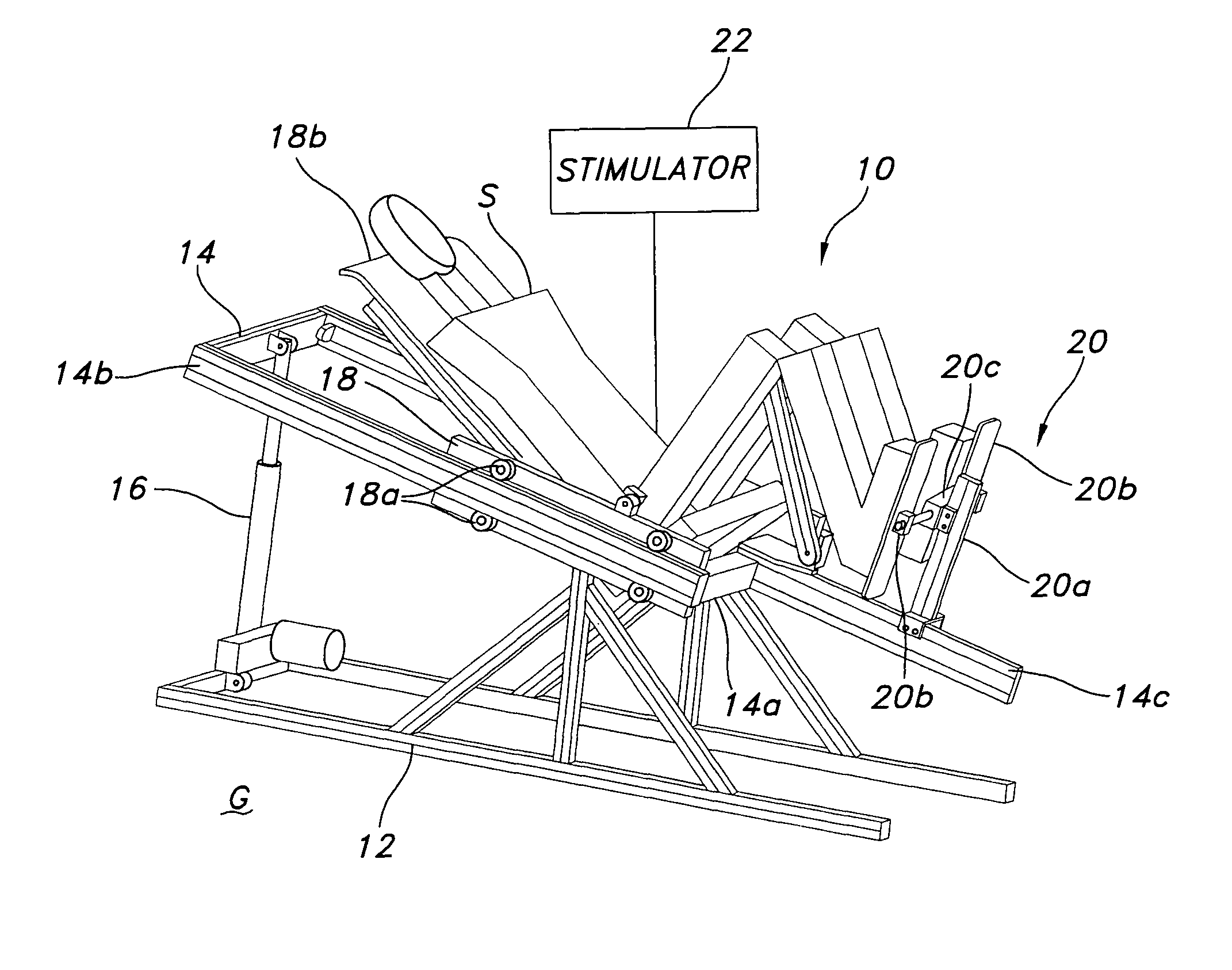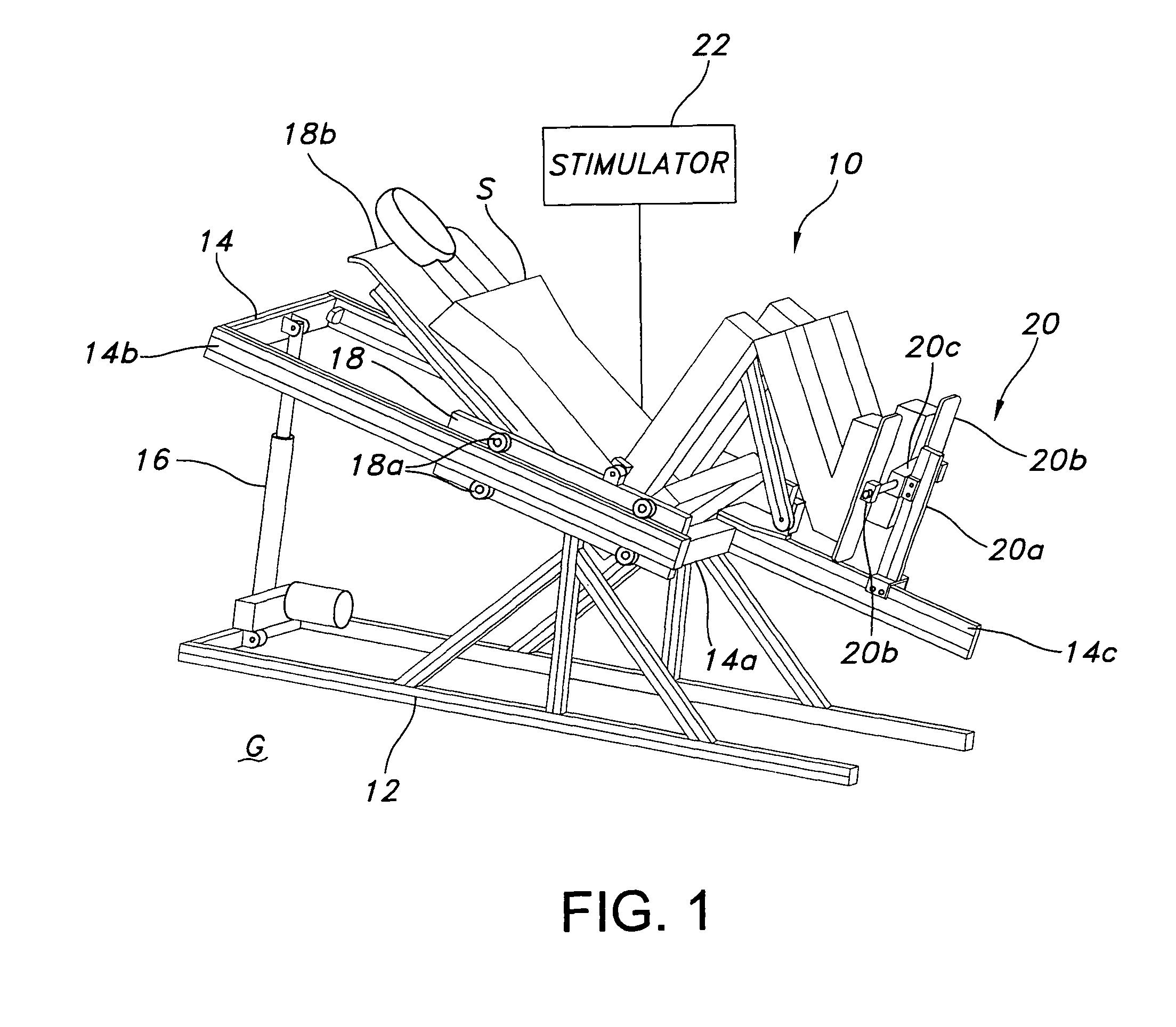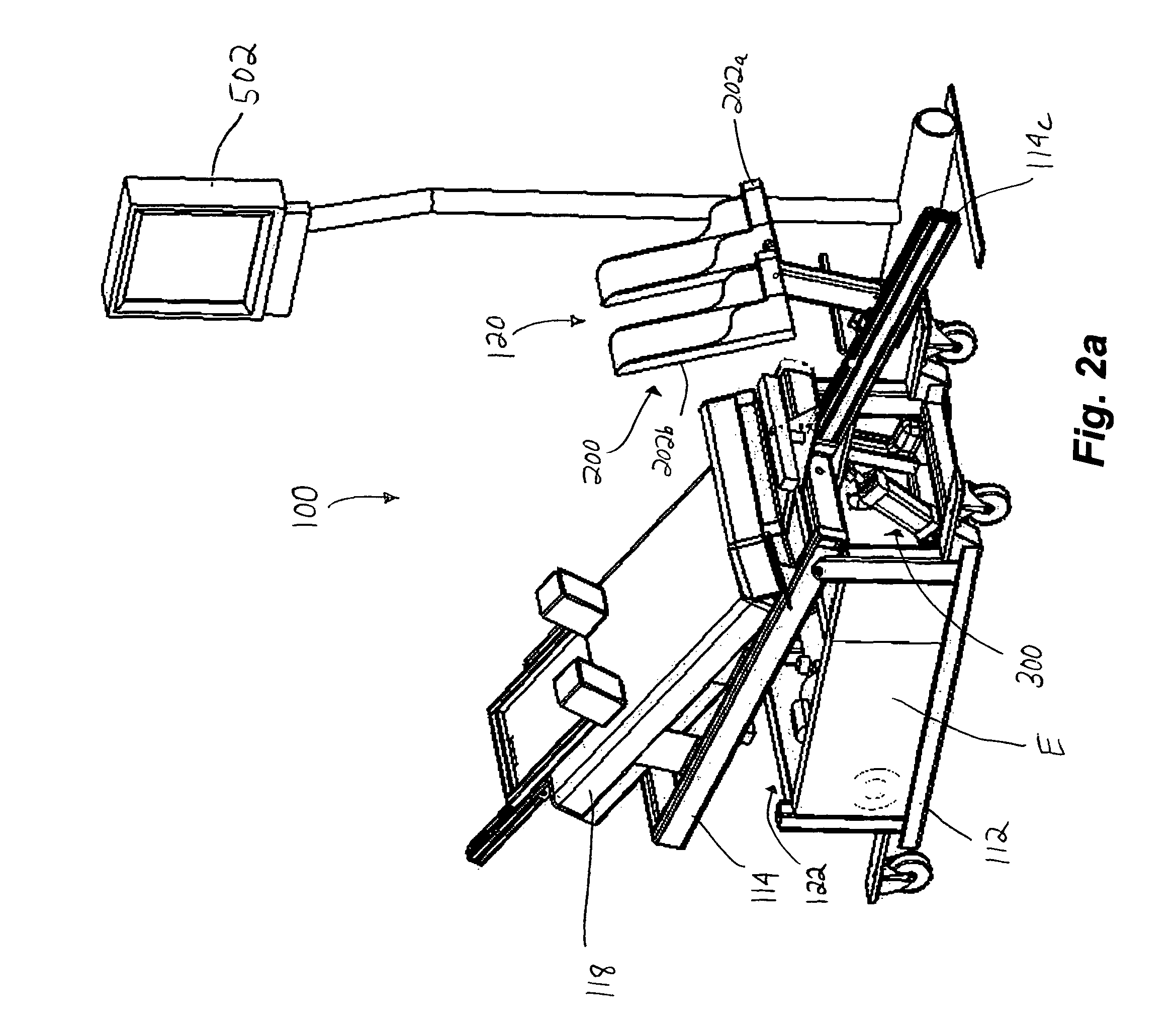Lower extremity exercise device with stimulation and related methods
a technology of low-extremity exercise and stimulation, applied in the field of human exercise and rehabilitation arts, can solve the problems of boredom, inability to achieve the effect of mental and emotional benefits of sitting still on the table, and certain limitations in the application of this technology and the results produced
- Summary
- Abstract
- Description
- Claims
- Application Information
AI Technical Summary
Benefits of technology
Problems solved by technology
Method used
Image
Examples
first embodiment
[0048]To facilitate this result, and with reference now to FIGS. 2a and 2b, another embodiment of the exercise device 100 is depicted and described. This device 100 is designed especially to accommodate the application and use of adaptive feedback control, versions of which are generally known in the art. First describing the mechanics, this embodiment of the device 100 includes a base 112, an angularly adjustable frame 114, a sled 118, and an associated stimulator 122, similar to the device 10 outlined in the foregoing description. However, instead of mounting the sled 118 to the frame 114 using rollers, static bearing blocks 118c are shown in FIGS. 3a and 3b as providing the low friction support. These bearing blocks 118c are in turn slidably received in and captured by elongated guide tracks 114d formed in the opposed sides of the frame 114 (FIG. 3b). Consequently, the sled 118 remains fully capable of moving to and fro in a longitudinal direction along the frame 114 between first,
second embodiment
[0055]With reference back to FIG. 2 and also to FIG. 6, the device 100 of this second embodiment may also include a knee flexion actuator 300, the purpose of which is to serve as a means for unbending the legs from the erect condition, usually once the second position is reached. This flexion actuator 300 in the illustrated embodiment includes a single cross bar 302 adapted for contacting the backs of the subject's knees. This cross bar 302 is in turn connected to an actuator, such as a linear actuator 304, oriented in a generally transverse direction. The linear actuator 304 is in turn mounted to a stable support structure, such as the frame 114 or frame extension 114c.
[0056]In use, the cross bar 302 is normally maintained in a retracted position, such that it lies adjacent to or contacts the backs of the subject's knees only when the legs are fully extended. At that point (which may be detected using the boot angle (or an average thereof), the sled position, the sled height in the v
PUM
 Login to view more
Login to view more Abstract
Description
Claims
Application Information
 Login to view more
Login to view more - R&D Engineer
- R&D Manager
- IP Professional
- Industry Leading Data Capabilities
- Powerful AI technology
- Patent DNA Extraction
Browse by: Latest US Patents, China's latest patents, Technical Efficacy Thesaurus, Application Domain, Technology Topic.
© 2024 PatSnap. All rights reserved.Legal|Privacy policy|Modern Slavery Act Transparency Statement|Sitemap



